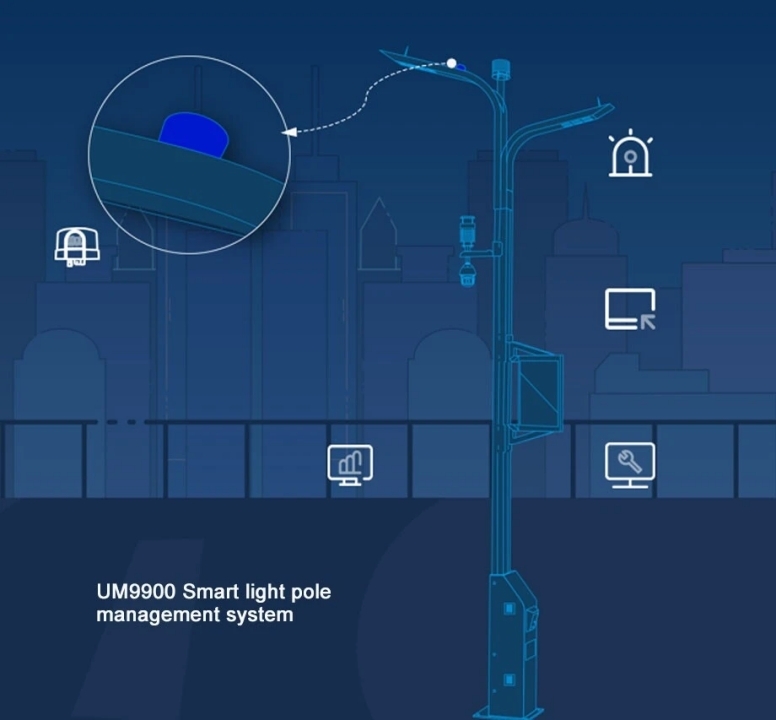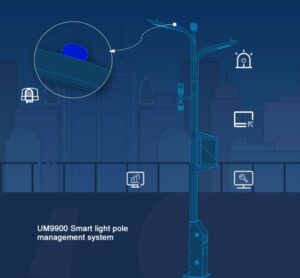Outline
- Introduction
- What Are Smart Photosensors and Why Do They Matter in Modern Lighting?
- How Does ZigBee Power Today’s Urban Smart Lighting Networks?
- Why Is LoRa Becoming the Preferred Choice for Wide-Area Lighting Systems?
- How Does NB-IoT Deliver Excellent Connectivity for Smart Cities?
- Can WiFi Still Compete in the Era of Smart Lighting Networks?
- Which Communication Technology Truly Defines the Future of Smart Photoelectric Sensors?
- Why Choose Long-Join Smart Photo Switch Sensors for Future-Proof Lighting Networks?
- What Does the Future Hold for Smart Photoelectric Sensor Technology?
- Final Words
Streetlights were once just turned on at dusk and off at dawn. But now they are getting smarter. Cities are upgrading to connected lighting systems that respond intelligently to real-world conditions. At the heart of this transformation lies the smart photocell sensors.
This compact device does more than detect daylight. It communicates and enables remote control of entire lighting networks.
But with multiple communication protocols, which technology truly leads the future of smart street lighting? Let’s find out.

What Are Smart Photosensors and Why Do They Matter in Modern Lighting?
Lighting controls represent an evolution of the simple sensors. Basic photocell switches are used to switch streetlights on or off based on ambient light. New models are now networked, intelligent devices. They connect via IoT protocols and report live data on luminaire status.
They enable utilities and cities to benefit from remote monitoring, data collection on usage and faults, and predictive maintenance scheduling. For example:
- Reduced energy waste by switching lights only when needed.
- Early fault detection, lowering downtime and maintenance costs.
- Faster transition from manual lighting schedules to intelligent ecosystems that respond dynamically to conditions.
How Does ZigBee Power Today’s Urban Smart Lighting Networks?
This tech uses a mesh network topology. Each node can relay data to nearby nodes. The protocol is built on IEEE 802.15.4. This means its transmissions require less power and data.
Advantages
- Useful for smart lighting, especially in urban deployments.
- Low power consumption allows photocontrollers to operate efficiently.
- High interoperability across lighting controllers and platforms due to a mature ecosystem.
Limitations
- Communication range per hop is typically about 100 m in urban environments.
- Dense lamp spacing is required to maintain mesh stability and avoid weak node links.
Best Use Case
Ideal for densely populated urban zones and parks where lamp poles are closely spaced and mesh performance is maximised. In these settings, ZigBee delivers reliable connectivity with efficient energy use.
Why Is LoRa Becoming the Preferred Choice for Wide-Area Lighting Systems?
This is a low-power wide-area network architecture with long-range transmission nodes sending data to centralized gateways. Gateways then relay traffic to the cloud for control and monitoring.
Advantages
- Covers distances up to 2–15 km per gateway in suitable terrain, ideal for city-wide or rural networks.
- Nodes operate at very low power, enabling long device lifespans and minimal maintenance.
- Enables scalable deployments of smart lighting with fewer gateways and less infrastructure density than mesh networks.
Limitations
- Data rates are modest, making LoRa less suitable for heavy telemetry or high-resolution analytics.
- Requires deployment of dedicated gateways and network planning, which adds upfront infrastructure effort.
Best Use Case
LoRa systems excel for lighting along highways, rural roads, large industrial parks, or urban fringe zones where fixtures are spaced far apart and power efficiency is critical. Further, here is a comparison of LoRaWAN frequency bands used in different regions.
| Region | North America | Europe | Asia-Pacific |
| Frequency Band | 915 MHz | 868 MHz | 923 MHz |
| Typical Range (km) | 10–15 | 5–10 | 8–12 |
| Network Regulation | FCC Part 15 | ETSI EN 300 220 | Local authority-approved |
| Deployment Example | Smart streetlights in Denver | Amsterdam Smart Lighting Project | Singapore Smart Nation Initiative |
How Does NB-IoT Deliver Excellent Connectivity for Smart Cities?
NB‑IoT operates via existing 4G LTE mobile infrastructure using a narrow-bandwidth protocol. Devices send small packets through licensed cellular spectrum without needing private gateways.

Advantages
- Leverages telecom networks: no dedicated gateway required; just SIM/cellular connectivity.
- Deep signal penetration: works reliably even underground or inside buildings thanks to a high link budget.
- Massive scalability: supports millions of connected endpoints per cell, suitable for large deployments.
Limitations
- Dependence on network operators: coverage, subscription fees, and service terms are subject to telecom providers.
- Slightly higher power demand than pure ultra-low-power LPWAN options, especially under poor signal or frequent transmission.
Best Use Case
Ideal for national or large-scale municipal lighting programs where lamp poles are widely spread and the carrier infrastructure is stable. NB-IoT ensures consistent connectivity and simplifies network rollout for smart-city lighting networks.
Here is a comparison table of NB-IoT vs LTE to understand which suits best for smart lighting.
| Feature | NB-IoT | LTE-M |
| Bandwidth | 200 kHz | 1.4 MHz |
| Latency | 1.6–10 seconds | <100 ms |
| Mobility | Stationary devices | Supports mobility |
| Ideal Use | Streetlights, sensors | Moving assets, vehicles |
| Power Efficiency | Very high | Moderate |
Can WiFi Still Compete in the Era of Smart Lighting Networks?
WiFi-based smart lighting uses standard wireless LAN protocols to connect devices directly to an IP network. Fixtures or smart photocell lighting sensors operate like IoT nodes on the existing WiFi infrastructure. Street lights with this protocol are designed to transmit status and control data over 2.4 GHz or 5 GHz bands.
Advantages
- WiFi infrastructure already exists in many commercial and municipal sites.
- Enables advanced control, real-time monitoring, camera integration, and rich data flows.
Limitations
- WiFi modules consume more energy than LPWAN solutions, reducing options for battery-or solar-powered nodes.
- Shorter effective range and heavy reliance on existing WiFi coverage and network quality. In large outdoor lighting grids, this can create dead zones or require repeaters.
- Competes with other WiFi traffic, which may affect the reliability of the light sensor switch.
Best Use Case
WiFi shines in zones where WiFi coverage already exists and high-data features are required. In these settings, the infrastructure cost is minimized and complexity is manageable. Here is a table outlining the power consumption patterns of different wireless communication protocols.
| Communication Type | Average Power Draw (mW) | Range (m) | Battery Life (Typical Node) |
| WiFi | 500–1000 | 50–100 | <6 months |
| ZigBee | 50–100 | 10–100 | 2–3 years |
| LoRa | 10–50 | 2000–15000 | 5–10 years |
| NB-IoT | 100–250 | 500–10000 | 3–5 years |
Which Communication Technology Truly Defines the Future of Smart Photoelectric Sensors?
There’s no single go-to solution. Each brings unique pros and cons. Here is a technology breakdown:
● ZigBee
Best suited for high-density urban environments where nodes are closely spaced.
● LoRa
Thrives on long-range, energy-efficient networks with sparse fixtures.
● NB-IoT
Designed for scalable, carrier-backed lighting systems covering cities or large territories.
● WiFi
Works for small-scale projects needing high data throughput and existing infrastructure.
Emerging trend
Hybrid solutions are gaining traction. Smart photocell for street light that support all communication protocols on the same platform, provide flexibility to adapt to site-specific needs. This multi-radio approach is backed by research on multi-radio architectures outperforming single-radio setups.
Why Choose Long-Join Smart Photo Switch Sensors for Future-Proof Lighting Networks?
Long-Join builds a multi-protocol light photocell sensor that supports ZigBee, LoRa, NB-IoT, and WiFi—so you can pick the best link for each site. They design Zhaga-Book-18 compatible modules for plug-and-play sensor insertion. This speeds retrofits and upgrades.
Products meet industry photocontrol specs defined by ANSI C136.10 for interchangeability and testing. Long-Join publishes models with surge protection ratings up to 10 kA / 20 kV. The corrosion and UV-resistant housings for outdoor durability are simply the cherry on top.
They offer OEM/ODM customization for protocol, mechanical fit, and branding. This helps utilities and contractors standardize across projects. Long-Join highlights partnerships and wide adoption by major lighting customers, positioning itself as a large supplier with deep field experience.

What Does the Future Hold for Smart Photoelectric Sensor Technology?
AI and edge analytics will turn raw sensor data into predictive maintenance. Standards convergence will make modules replaceable and future-proof.
Expect modular, multi-radio photocells that switch protocols or run dual radios to match site needs. Real projects already show this trend.
Overall, the move is toward data-driven, energy-efficient lighting systems. They will be serviceable, secure, and upgradeable without full luminaire replacement.
Final Words
Smart photocells are reshaping how cities manage lighting. Each communication technology offers unique strengths to meet diverse smart city needs. For dependable, future-ready solutions, Chi-Swear stands out as a trusted supplier of Long-Join smart photocontrollers, delivering proven quality, compliance, and lasting performance.






